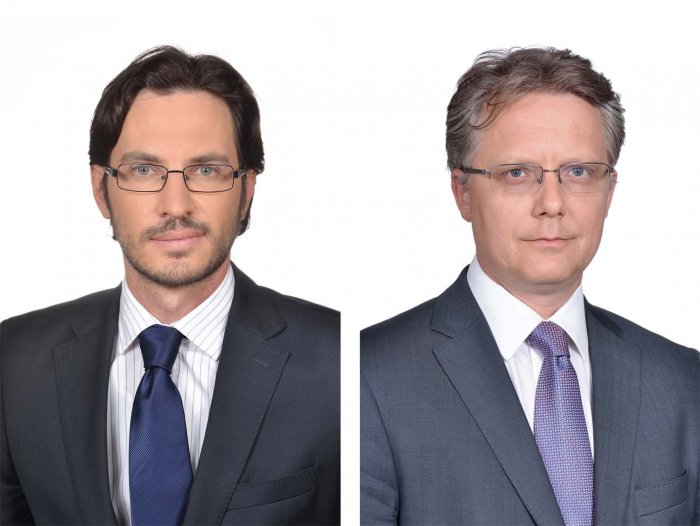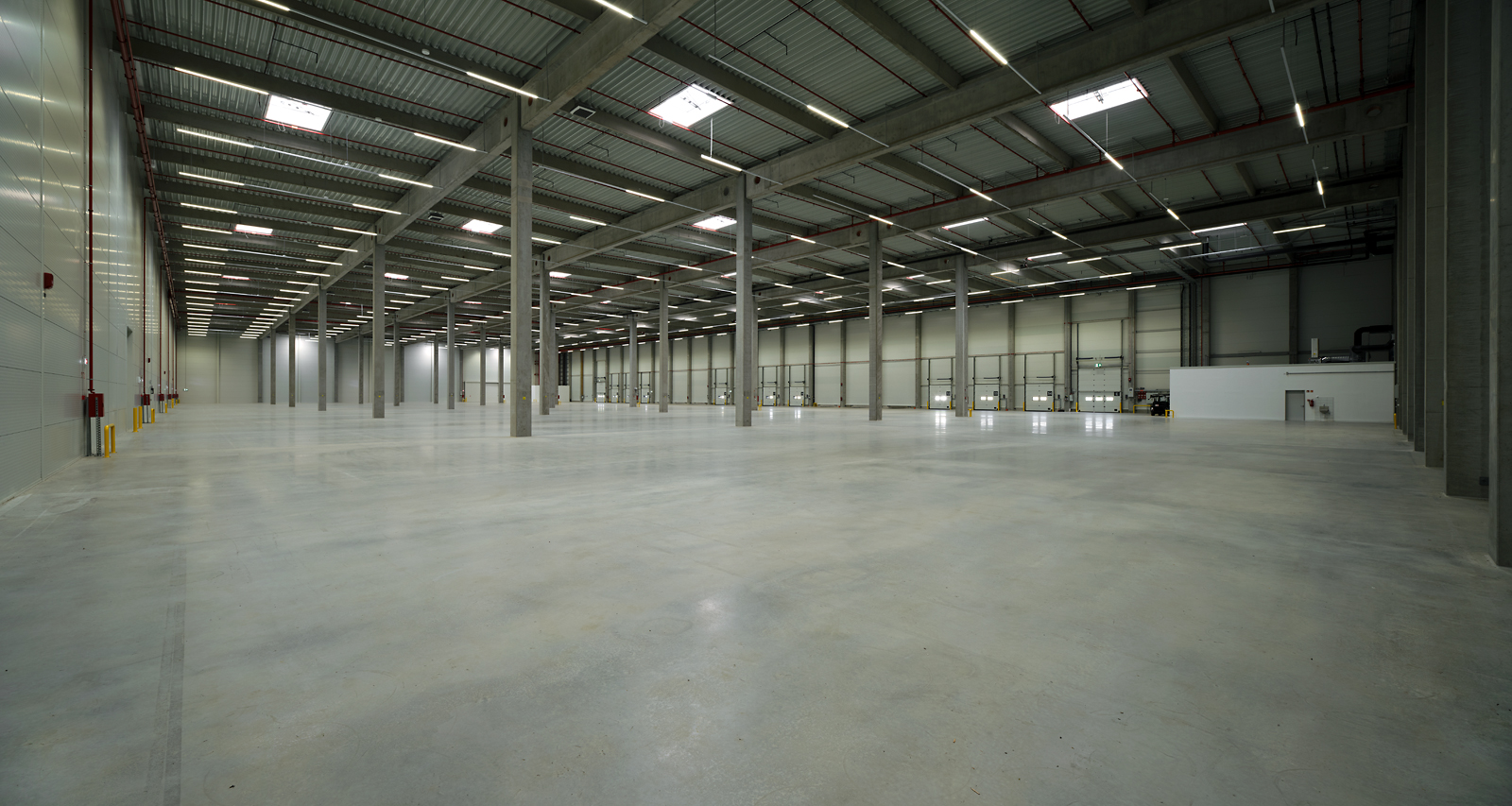Robust Growth on Real Estate Market Destined to Continue

The overall picture couldn’t be better on the Hungarian real estate market: Capital keeps flowing in and investing promises handsome yields. Existing challenges mainly stem from construction bottlenecks induced by breakneck pace growth.
József Várady (left), recently appointed partner of the
Real Estate Group of CMS Budapest and Gábor Czike (right), partner and head of the Real Estate and Construction Group of CMS Budapest.
As highlighted by the CEE Real Estate Compass recently published by CMS and Colliers International, 2016 saw higher flows into CEE Real Estate than at any point since the last cyclical peak in 2007. Hungary has entered a particularly active phase on the real estate market. One main reason for the upswing is that prices are still very attractive for investors compared to other prime cities in the region, Gábor Czike, partner and head of the Real Estate and Construction Group of CMS Budapest, says.
On the other hand, demand was put on hold for years here, which is now offset by the current above-average dynamics. However, in the meantime many left the country to work abroad, and consequently the construction sector is struggling to keep up with the exponential growth due to a dire lack of capacity. Rescue cannot be expected from foreign migrant workers, either. Those that run larger projects are confronted with extra difficulties in committing skilled labor. The labor shortage is pushing prices up. It remains to be seen how the market will handle the latter.
“As for the office segment, a critical question concerns whether the vast number of newly developed office spaces due to hit the market in 2018 will truly find enough tenants at the end of the day,” Czike notes.
Dynamic Expansion
All segments are witnessing dynamic expansion. The retail sector is profiting tremendously from substantial year-on-year wage increases and the corresponding growth in consumer spending, József Várady, recently appointed partner of the Real Estate Group of CMS Budapest, adds. The residential property segment really took off in early 2016 thanks to a measure according to which VAT on newly built homes was cut from 27% to 5%. Logistics has registered equally strong figures in the past two years.
“The peak of 2007 brought EUR 2 billion in total investments, which had dropped to EUR 250 million by 2012,” Várady says. “Our practice detected the next robust upward trend in the second half of 2015, while 2016 approached pre-crisis investment levels at an estimated volume of EUR 1.7 bln-1.8 bln.” Many transactions were deliberately pushed over to 2017 to benefit from the reduced corporate income tax rate effective from January 1; without such moves, the 2007 peak in real estate investment would likely have been surpassed.
Despite similarly record-high investment activity, the situation differs from that of 2007 on two accounts, Czike stresses. For one, interest rates are at an unprecedented low, which fuels Hungarian forint loans immensely. Furthermore, domestic investors have emerged on the radar, too, and are carving ever larger slices out of the investment cake. Hungarian real estate funds are faring well, and a constant capital flow is clearly visible. All this combines to create a much healthier market than back in 2007.
Another sign for market optimism is that regional real estate funds, though still small in capital volume, have appeared with Czech and Slovak funds buying on the Hungarian market – a phenomenon previously unheard of. Those investing into CEE real estate funds must count on somewhat smaller returns, though, than the standard profit rate of 6-10% of the property market, as real estate funds are obliged by law to keep some their assets in government bonds, the lower interest on which erodes the final total returns. The returns of retail investors in real estate funds are therefore closer to around 3%.
Finance not an Issue
According to Várady, finance is not an issue for the moment. The times are gone when it was nearly impossible to find a bank to back a real estate project. Instead the banks are now competing against one other to get on board. That said, banks seem to be carrying out more thorough assessments prior to engagement and are evaluating risks more carefully than before the recession.
The experts agree that the main driving engine of the current growth is connected to prevailing low interest rates, both locally and globally. It is worth noting that any sudden major change on that front could quickly turn optimism into gloom. Higher interest would also make foreign investors shift their focus to the potential political, macroeconomic or sociological risks related to Hungary that the market turns a blind eye to for now. But, sooner or later, interest rates are destined to go up, even though the probability of an interest raising cycle looks rather unlikely in the short-term.
CMS has always treated real estate with special care, even in the years of hardship, and the firm prides itself having gathered expertise in every segment from greenfield investments to building shopping malls. “We are real ‘omnivores’ when it comes to real estate,” Czike says. “Our confidence in continuing positive trends and our own improving business perspectives couldn’t be manifested better than by the appointment of our second real estate partner, József Várady.” This measure makes CMS Budapest the only international law firm in town with two such partners.
The message over market confidence is further strengthened by the recent merger between CMS Cameron McKenna U.K. and Olswang and Nabarro. Thanks to the latter’s special focus on property, some 500 attorneys now deal with real estate at CMS U.K. This cooperation is bound to deliver mutual benefits. “Nabarro has not had a CEE representation, so a direct link with the CMS Budapest office opens new growth paths for CMS. And our Budapest office is looking forward to serving Nabarro’s legacy premium clientele that is seeking professional consultancy,” Czike concludes.
SUPPORT THE BUDAPEST BUSINESS JOURNAL
Producing journalism that is worthy of the name is a costly business. For 27 years, the publishers, editors and reporters of the Budapest Business Journal have striven to bring you business news that works, information that you can trust, that is factual, accurate and presented without fear or favor.
Newspaper organizations across the globe have struggled to find a business model that allows them to continue to excel, without compromising their ability to perform. Most recently, some have experimented with the idea of involving their most important stakeholders, their readers.
We would like to offer that same opportunity to our readers. We would like to invite you to help us deliver the quality business journalism you require. Hit our Support the BBJ button and you can choose the how much and how often you send us your contributions.








